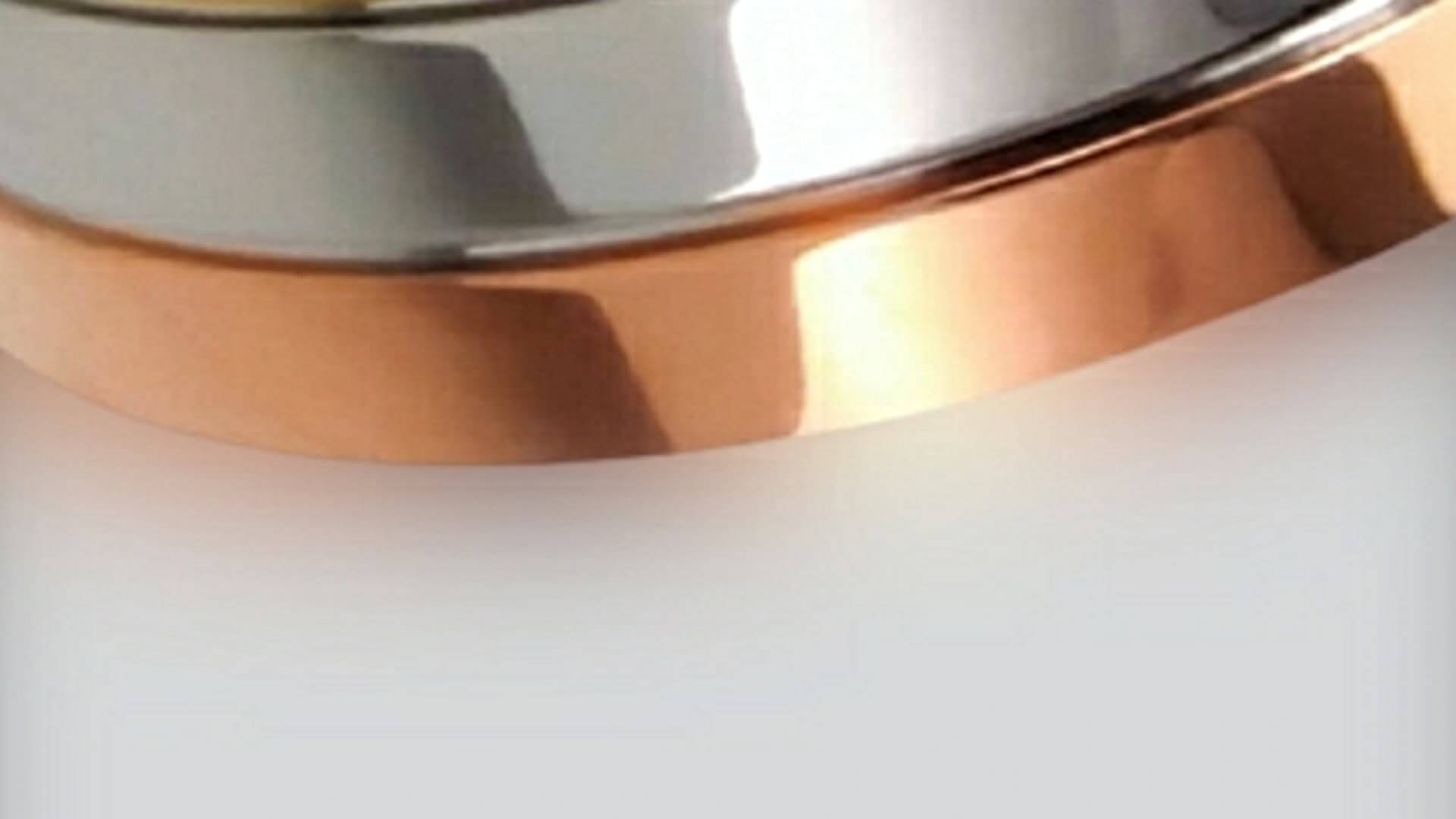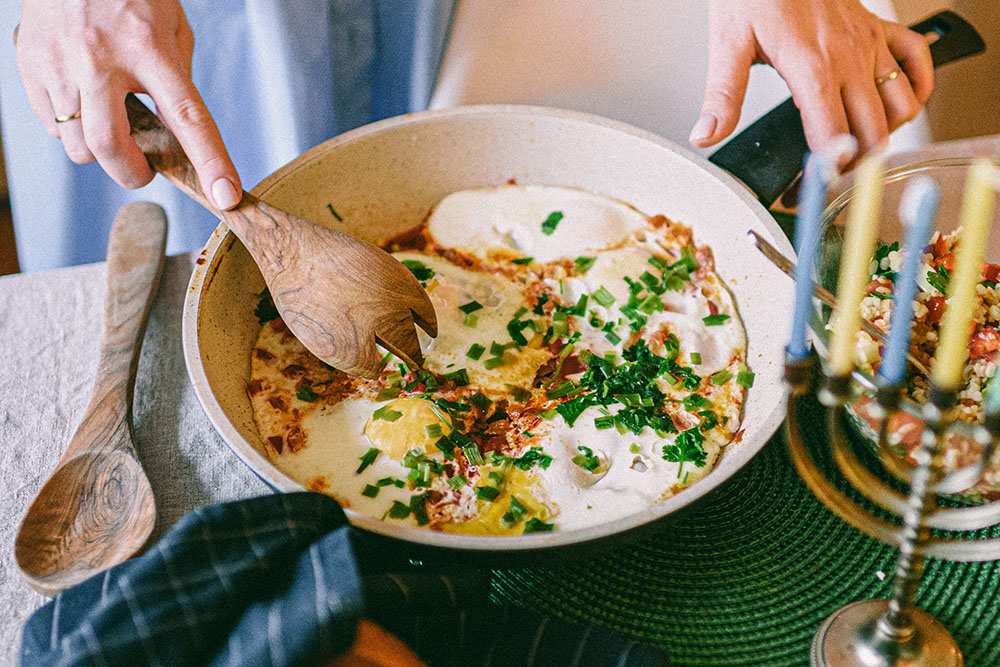Cookware shopping is not exactly a one-off deal, there are many factors to consider. If you’re to revamp your kitchen cabinet and terms like tri-ply, multi-ply and hard-anodized seem confusing, we’re here to help.
Let’s begin with tri-ply cookware: what is tri-ply cookware exactly? This type of cookware is made by bonding and pressing three metal layers together for a durable finish. Since a single-layer pan cannot stand the heat, cookware manufacturers introduced the plying technique for better results. This metal bonding method ensures the final product is long-lasting, safe-to-use, and easy-to-maintain.

What Is Tri-Ply Cookware: The Story Of A Metal Innovation
Tri-Ply cookware was first manufactured by All-Clad, a leading name in the cookware industry. The owner of All-Clad steel, John Ulam, was an experienced metallurgist with a deep interest in cookware. Since John had created over 70 metal patents himself, he ventured into cookware with the idea to make bonded cooking vessels.
And soon after, the first aluminum-steel bonded pan rolled into the market. This metal combination cooked well, didn’t impact natural food flavors and was more resistant than other options. Today, we see several options in layered cookware, for example 5-ply and 7-ply, but 3-ply was the pioneer.
How Is Tri-Ply Cookware Made?
There are two parts of a tri-ply cooking vessel; the core and the layering. The core is usually aluminum, while the outer and inner layers can be made of copper or steel, depending upon the cookware type in question. Once the core, for example the aluminum, is shaped like a pan, it’s pressure-treated to bind with inner and outer layers to complete the overall look.
Some manufacturers only make a tri-ply base while the pan sides are single-layered. However, all high-end brands like All-Clad ensure their vessels have three metal layers from the base all the way up to the rim.
What Makes Tri-Ply Cookware A Good Choice?
Have you ever seen a discolored metal pan? This happens when the metallic surface is corroded after regular usage and tiny metal scraps start leaching into the food. That’s when tri-ply cookware comes into the picture. This durable metal combination doesn’t wear off with frequent usage and ensures your food is toxin-free.
Picking either aluminum or steel cookware isn’t a smart choice; both materials have distinct qualities that are important for home cooks. That’s why a combi-cookware set is a good deal. You get advantages of two metals with a single cookware set, what’s not to like?
Fast Heating
Professional and home chefs don’t stand while their pan is getting ready; they need quick and easy solutions. Tri-ply pots and pans provide exceptional heat conduction because their cores are made of aluminum, an excellent metal to conduct heat. Aluminum heats up quickly, helping busy cooks manage things seamlessly. Also, tri-ply cookware’s fast heating mechanism lets you prevent under/overcooked food batches. You get even, long-lasting heating with a lightweight tri-ply pan. Here is an excellent article on the cookware professional chefs use at home.
Better Heat Retention
Stainless steel pans resist corrosion, but it’s not the best at heat retention. You might face hot spots in a steel cooking vessel that make cooking quite difficult. On the contrary, aluminum pans offer excellent heat distribution but they are prone to scratches; you’ll be on your toes to protect a delicate aluminum vessel.
But when we combine the two, for instance, steel and aluminum, we get fewer hot spots, fast heat transfer, better heat retention, and an easy-to-clean surface altogether. Most professional chefs prefer tri-ply (or even thicker) metal vessels for cooking because they are more convenient and more durable.
Less Energy Consumption
When your cooking pot has a strong aluminum core, it provides superb heat retention, ensuring you don’t overuse energy resources. Once a tri-ply vessel is preheated, it retains heat for a considerable time. Therefore, if you’re an environmentally conscious person, get cookware that aligns with your objectives.
Convenience
Cleaning up is generally the toughest when we talk about kitchen chores. But, when you have apt cookware, cleaning up takes less time and effort. Stainless steel is easy to maintain and doesn’t require much scrubbing, even when something sticks to its bottom. Therefore, steel pots are often preferred by cooking geeks because they know how to handle them well.
Although it’s recommended to avoid abrasive sponges and harsh chemicals with cookware, tri-ply sets are fairly resistant to them. If an accident happens, you can confidently scrub a tri-ply pan, and you won’t see metal scraps coming out of it. When a metallic surface is pressure-treated, it hardens to form solid inner and outer layers, which is always easy to handle.
When the aluminum core is coated with shiny stainless steel, it becomes rust-proof and scratch-resistant, further easing your tasks. If you don’t like modern non-stick pans but still want something practical, tri-ply cookware is the answer. This sold metal combination allows you to cook smartly and quickly.
Durability
This is a no-brainer; three layers of metal are stronger than one or two. But that’s not it. If you have a multi-layered cookware set made of cast-iron or aluminum, it’ll get rusted and corroded after regular usage. Luckily, that’s not a concern with aluminum steel and copper steel cooking pots. These polished pans are scratch-resistant and strong enough to bear daily usage. This tri-ply adjustment lasts a lifetime and adjusts to temperature changes quickly, ensuring your cooking passion stays alive.
Compatibility
Aluminum and modern ceramic cookware sets are not induction compatible, leaving you with fewer cooktop options. But, tri-ply aluminum-steel cookware doesn’t disappoint here. These solid cooking vessels are induction compatible and safe, thanks to their non-coated interiors.
If you aren’t fond of non-stick coatings and hate it when food sticks to the bottom of a pan, try combo cookware for a change. These thick pans and pots increase your cooking ability without requiring much upkeep.
Final Thoughts On Tri-Ply Cookware
The cookware market is huge, you will often find yourself at crossroads with the sheer amount of options available in the market. But one factor that remains constant is durability, and tri-ply cookware ensures that. These durable cooking vessels stay in your kitchen for decades, ensuring you enjoy making every recipe. The next time you go cookware shopping remember this rule: the more metal layers mean the better performance!






